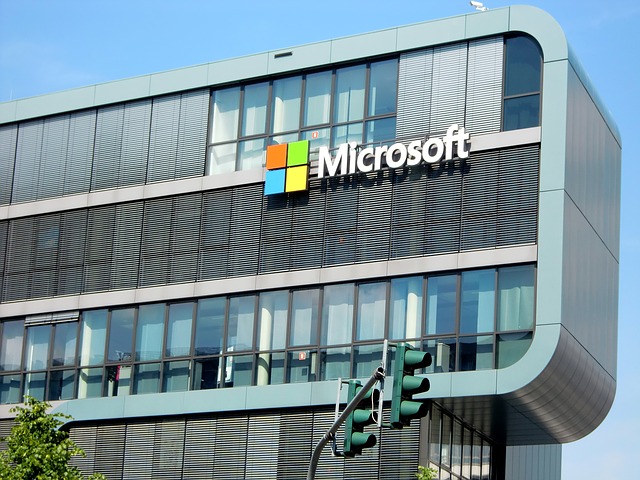Nadella’s Microsoft Delivers Stellar Cloud Numbers

Microsoft (Nasdaq: MSFT) recently announced its first quarter results and the performance blew past all market expectations. Microsoft continued to deliver stellar growth in the Cloud segment, instilling additional confidence in the market. Post the result announcement, its stock climbed to record high-levels, once again.
Microsoft’s Financials
Microsoft’s Q1 revenues grew 12% over the year to $24.5 billion, ahead of the market’s forecast of $23.56 billion. EPS of $0.84 was also ahead of the Street’s expectations of $0.72 for the quarter.
By segment, revenue from Productivity and Business Processes grew 28% over the year to $8.2 billion driven by a 10% increase in Office commercial products and cloud services revenue and a significant 42% growth in Office 365 commercial revenue. Office consumer products and cloud services revenue increased 12% and Office 365 consumer subscribers increased to 28 million. Dynamics products and cloud services revenue increased 13% driven by Dynamics 365 revenue growth of 69%. LinkedIn accounted for $1.1 billion in revenues for the quarter.
Revenue from the Intelligent Cloud segment grew 14% to $6.9 billion as Server products and cloud services revenue increased 17% driven by Azure revenue growth of 90%. Enterprise Services revenue increased 1% due to growth in Premier Support Services.
Revenue from the More Personal Computing segment was flat at $9.4 billion despite the 4% increase in Windows OEM revenue and 7% increase in Windows commercial products and cloud services revenue. Search advertising revenue excluding traffic acquisition costs increased 15%, Surface revenue increased 12% while Gaming revenue increased a modest 1%.
For the current quarter, Microsoft projected revenues of $28.2 billion, ahead of analyst forecast of $28.1 billion. The company forecast EPS of $0.84, ahead of the Street’s forecast of $0.83 for the quarter.
Microsoft’s Cloud Growth
Once again, Microsoft’s stellar performance was attributed to its Cloud focus. Its commercial cloud annualized revenue run rate is $20.4 billion, one year ahead from its target set in 2015 by its leader Satya Nadella. Here is an interesting infographic, courtesy Motley Fool, that showcases this stellar performance.
Microsoft still did not break out details of its Azure sales besides mentioning that revenues grew 90% over the year. There is no denying that Amazon is still the market leader in the cloud market. According to a Synergy Research Group report, AWS controls 34% of the market while Azure has 12%. But, Microsoft has been gaining ground faster than Amazon. This was the eighth straight quarter when Microsoft has outpaced Amazon’s growth. Microsoft is already witnessing strong demand within bigger enterprises for its cloud service, as it is perceived to be an enterprise software company, unlike Amazon. The perception hasn’t hurt Amazon significantly, but as Microsoft continues to lower prices and expand data center capacity around the world, organizations are beginning to take notice.
It has also been adding new capabilities to the Cloud. For instance, it is now adding AI to its Azure hybrid cloud offering. It recently announced a tie-up with Cray to allow customers in select Microsoft datacenters to have the option to use Cray supercomputers that are connected to Azure. These supercomputers will integrate with Azure virtual machines, Azure Data Lake storage, as well as with Microsoft’s AI and Machine Learning services. This new option will allow customers to run high-performance computing, AI, modeling simulations, and advanced analytics workloads without needing to invest in on-premise supercomputers.
Last month, at its Microsoft Ignite 2017 conference, Microsoft also introduced new AI capabilities, such as Azure Machine Learning (AML), new Visual Studio tools for AI, new Cognitive Services and other new enterprise AI services and tools. Microsoft plans to leverage Azure to help simplify the use of AI services to any developer anywhere.
Analysts are more than pleased with Microsoft’s performance with a few raising their price target for the stock from $90 to $100. For now, its stock is trading at $83.89 with a market capitalization of $647.2 billion. It had fallen to a 52-week low of $57.28 in October last year.
Featured Videos
Can 1M/1M Help Me Raise Money?
How Does 1M/1M Democratize Entrepreneurship Education?
How Does 1M/1M Democratize Management Consulting?
When Is The Right Time To Join 1M/1M?
Can 1M/1M Help Me With Business Development?
Can 1M/1M Help Me With Market Sizing?
Can 1M/1M Help Me Validate My Product?
Will I Have Private 1-on-1 Sessions In 1M/1M?
How Does 1M/1M Help Entrepreneurs Connect With Silicon Valley?
Mentoring or Consulting?
Why Does 1M/1M Charge $1000 a Year?
Why Does 1M/1M Partner With Local Organizations?
Why Don\’t Mentoring Networks Work?
Why Is It Important To Study With 1M/1M Now?
Dan Stewart Story
Vikrant Mathur Story

